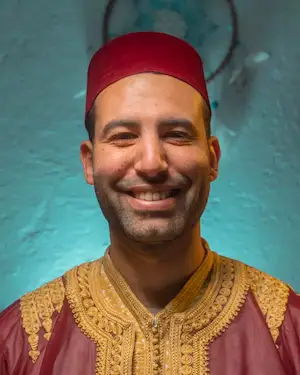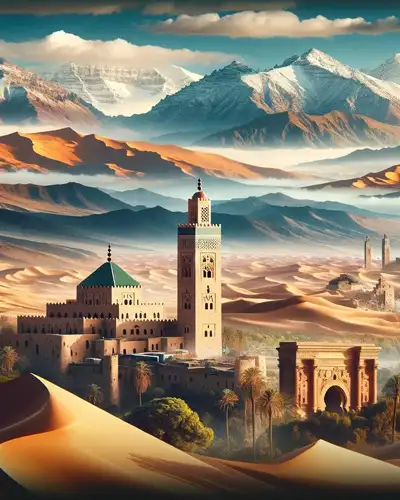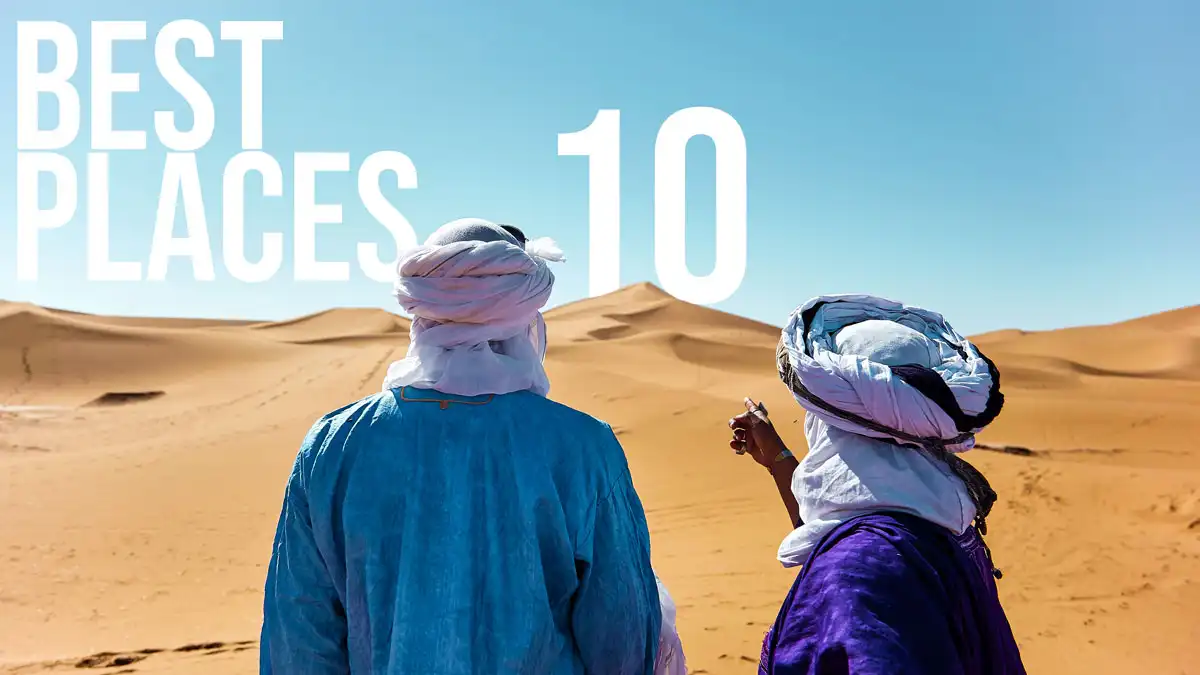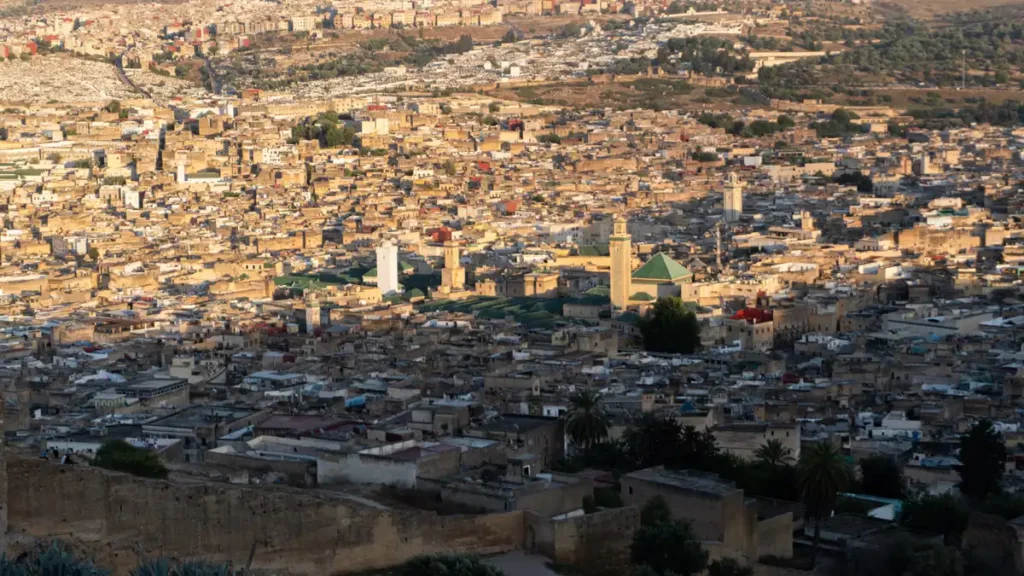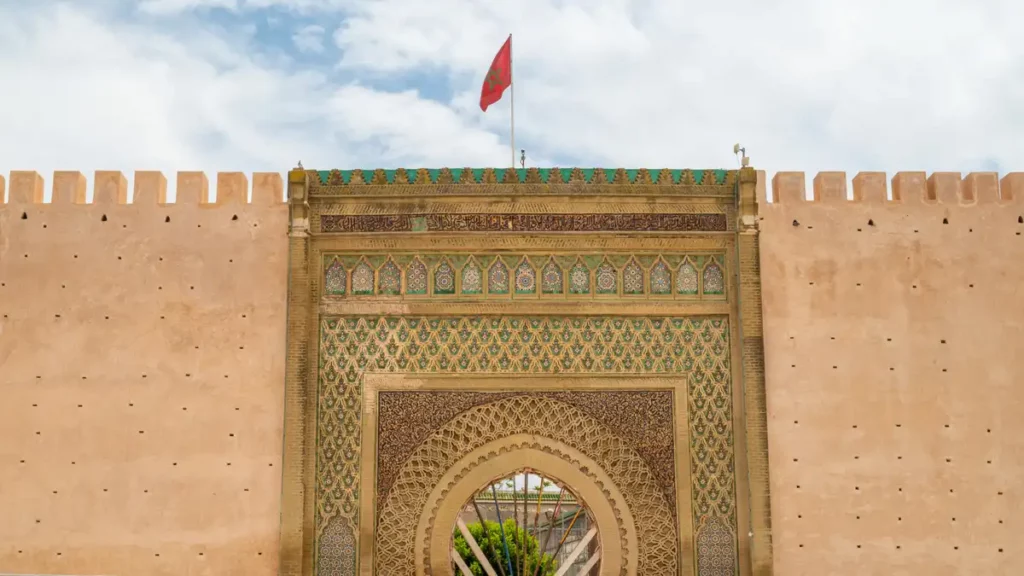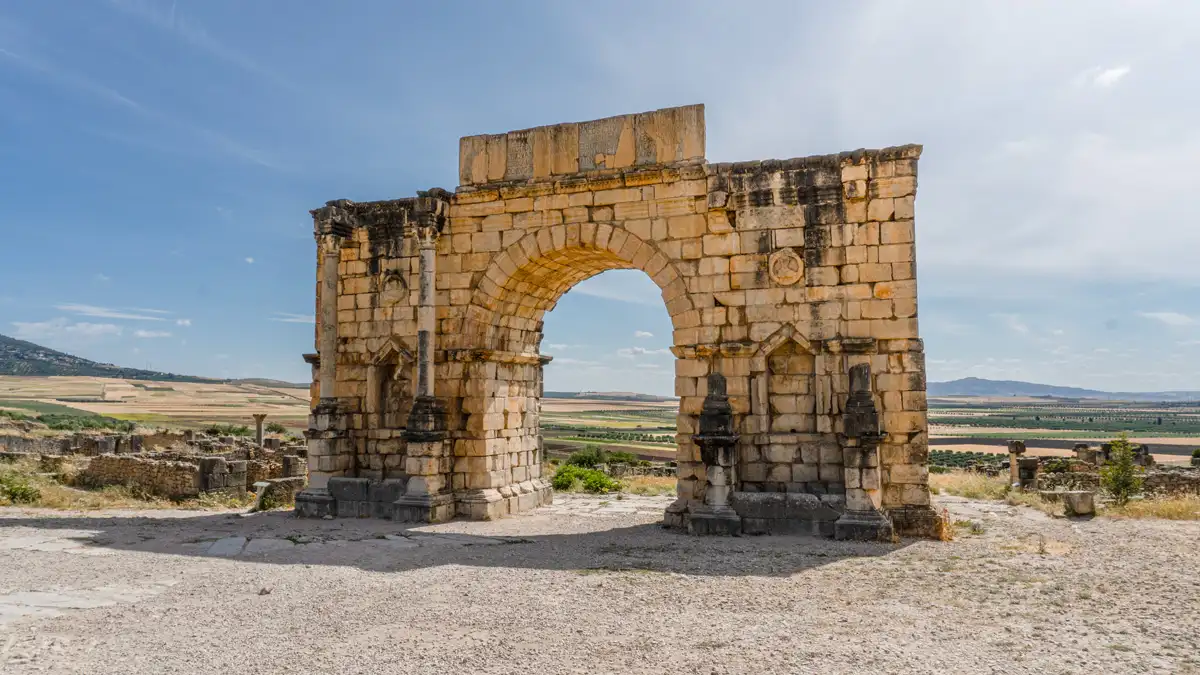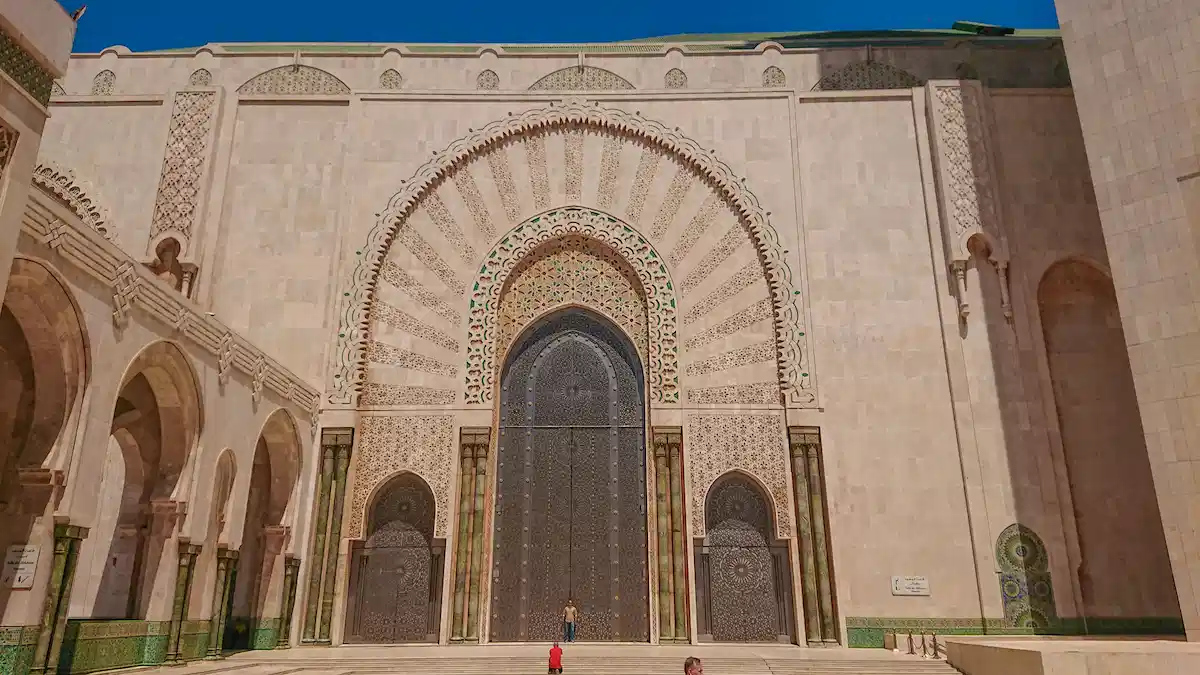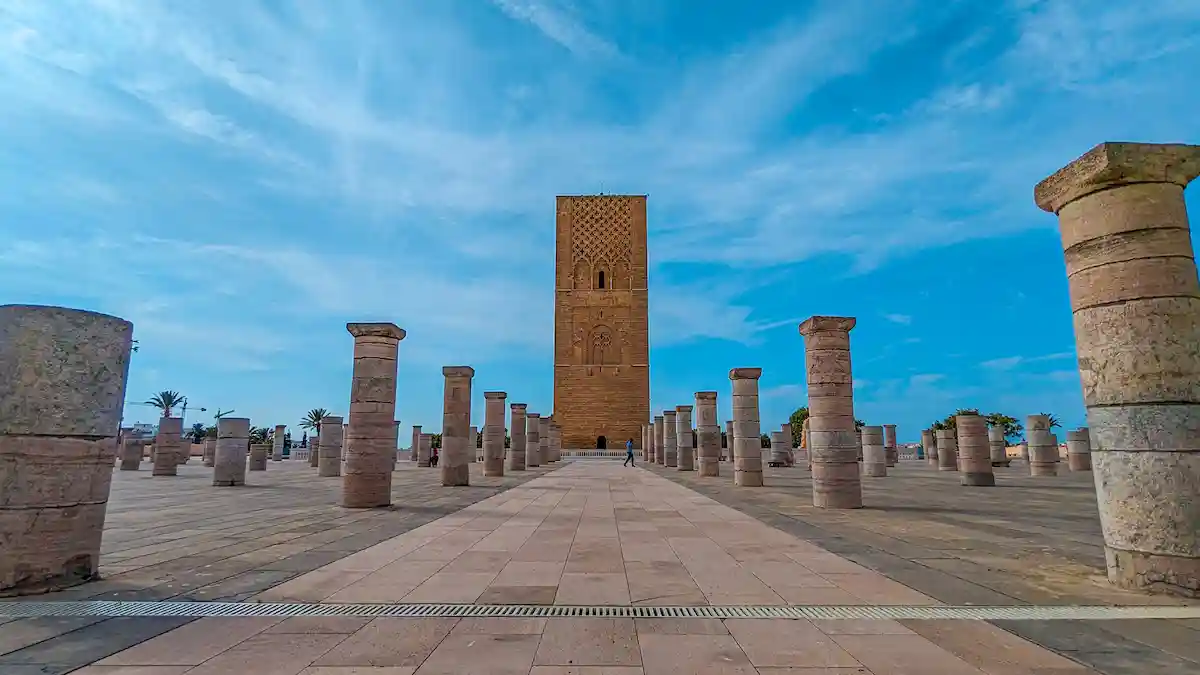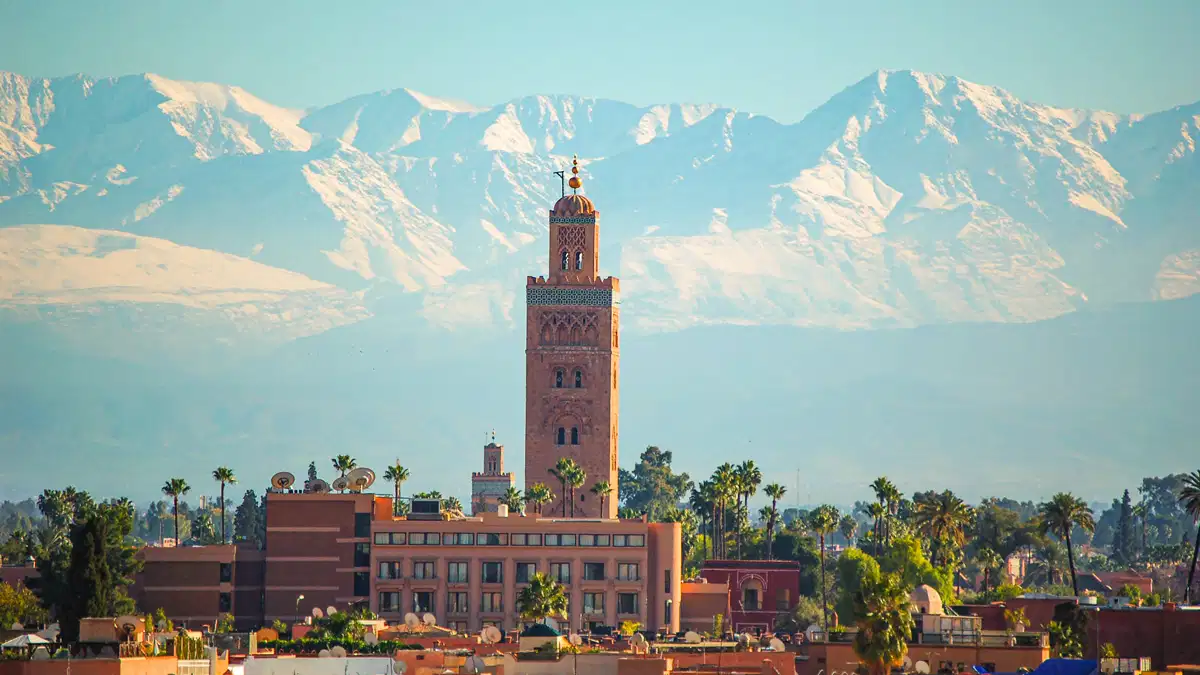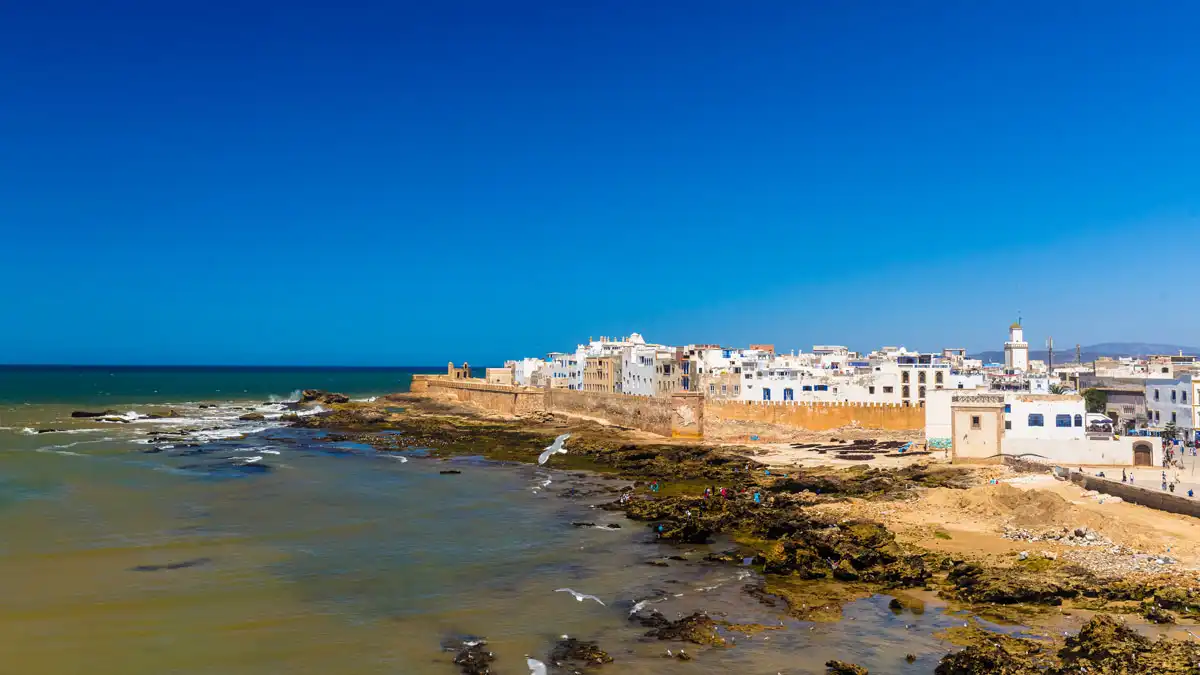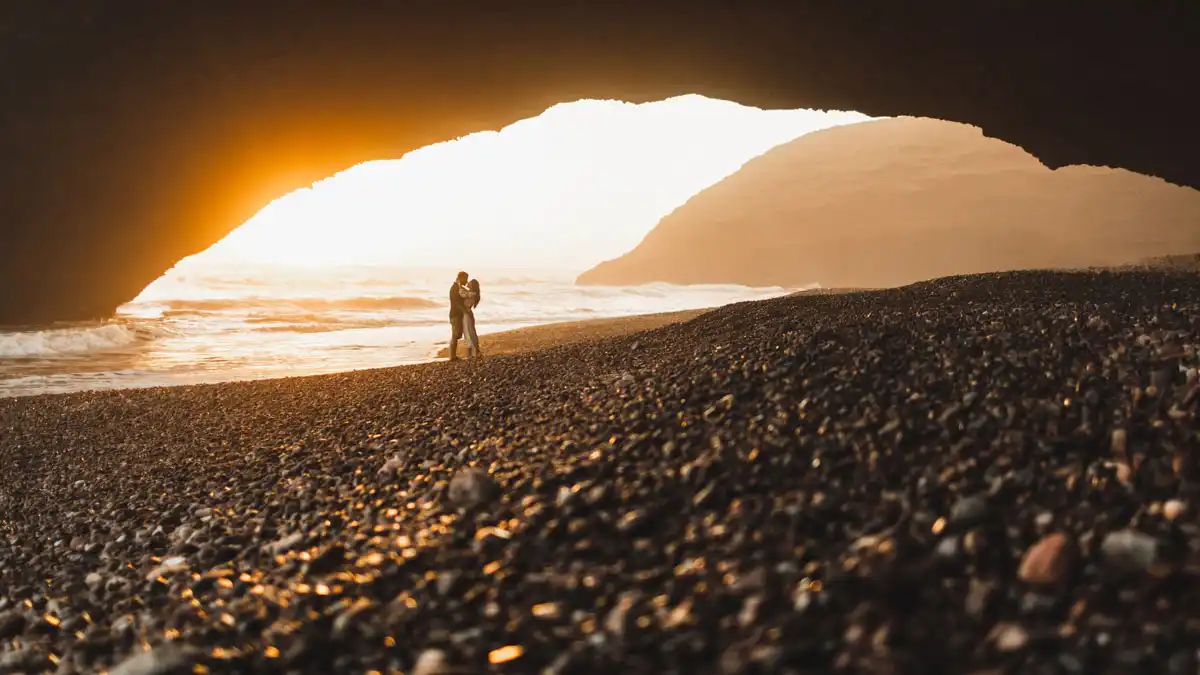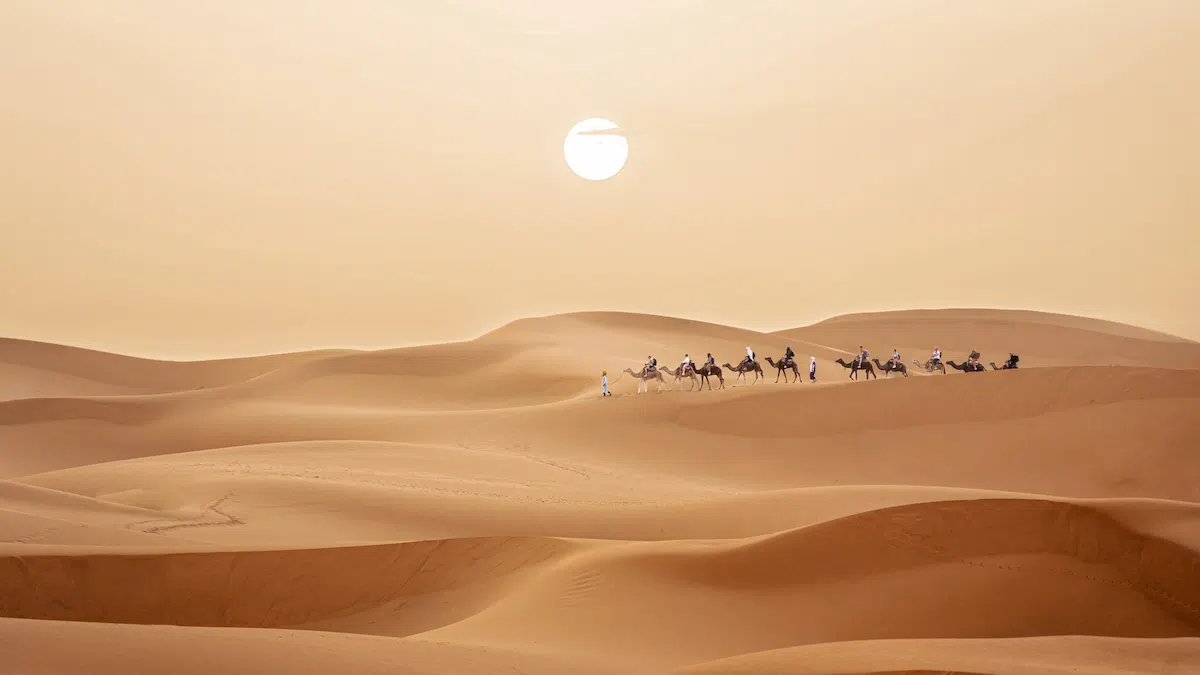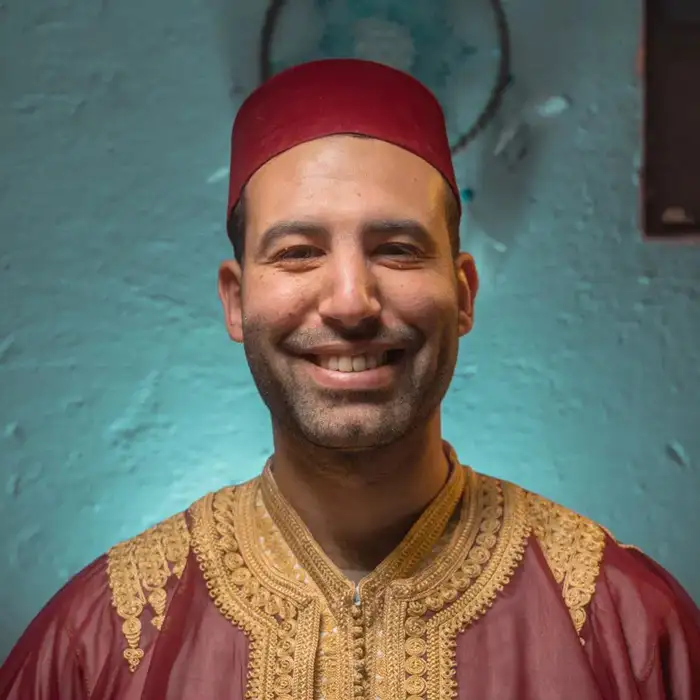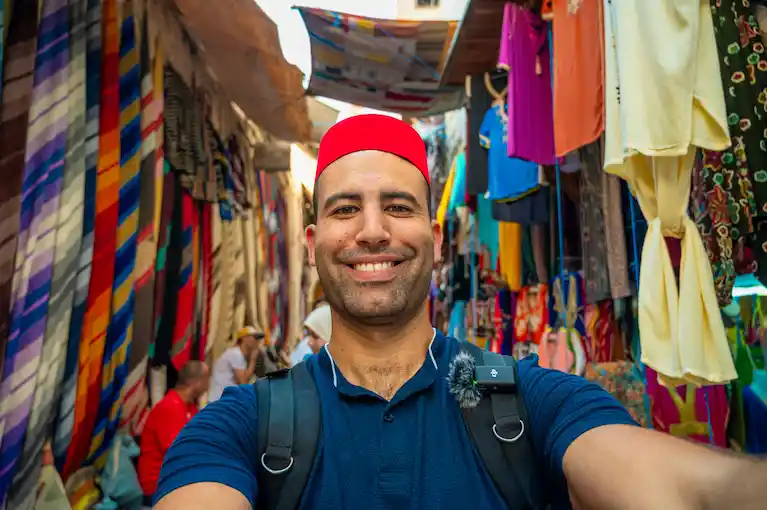10 Best Places To visit In Morocco
Morocco has many amazing places to visit, each with its own story and sights. In this guide, I’ll walk you through the 10 best places to visit in Morocco. Whether you’re drawn to history, adventure, or relaxation, Morocco has something for everyone.
1. Chefchaouen
Chefchaouen, often referred to as the Blue City, was founded in 1471 by Moulay Ali Ben Moussa Ben Rached El Alami as a base to defend against Portuguese invaders in northern Morocco. The city attracted Muslim and Jewish refugees who fled Spain during the Spanish Reconquista in the 15th century. Many locals believe that these early settlers introduced the tradition of painting the town blue as a symbol of sky and heaven. Today, Chefchaouen remains an amazing town with a mix of cultural influences, making it a significant tourist attraction.
Chefchaouen is located in the Rif Mountains and is known for its beautiful blue streets and buildings, which create an almost otherworldly ambiance and feel. Tourists can explore the medina, where they can find artisan shops selling pottery, leather goods, esthetic products, and traditional Moroccan clothing. Ras El Maa waterfall on the edge of town is a nice place, especially during lunchtime since it has lots of traditional Moroccan restaurants on the waterfall. Hiking trails in the surrounding Rif Mountains offer great views of Chefchaouen from above. My favorite spot is Mosque Bou Za’afer during sunset, which is something to remember for life.
Culturally, Chefchaouen is relaxed and welcoming, with friendly locals who enjoy sharing their customs with visitors. Many shops sell handicrafts made exclusively in the area, like carpets, scents, soap, and essential oils. It is a favorite spot for those looking to experience Morocco at a slower pace. Nearby, Talassemtane National Park has excellent hiking and scenic viewpoints. Also, Akchour Waterfalls, a 30 km away canyon, is a must-see place for every traveler visiting Chefchaouen.
The best time to visit Chefchaouen is in spring or fall when the weather is mild. Day trips to Chefchaouen are common from Fez or Tangier, although staying overnight allows travelers to enjoy the city’s calm nights and starry sky. If you are interested in visiting, here are the 8 best things to do in Chefchaouen. You can also book a tour to Chefchaouen from Casablanca, Fez, or Tangier.
2. Fez
Fez is one of Morocco’s oldest cities, it was founded in the late 8th century by Idris I, who established the Idrisid dynasty and made Fez the first imperial capital of Morocco. By the 9th century, Fez had grown into a cultural and religious center, to be a hub for scholars, artisans, and traders arriving from all over the Islamic world. The establishment of Al Quaraouiyine University in 859 AD marked Fez as a center of learning, and it remains one of the oldest continuously operating universities in the world.
Fez is located in northern Morocco, and is known for its incredibly preserved medieval medina, which is a UNESCO World Heritage site and a labyrinth of narrow streets (it has approximately 9000 street), souks, and historic architecture. Key sites include the Bou Inania Madrasa, a marvel of Moroccan architecture, and the city’s famous tanneries, like Chouara Tannery, where leather is still processed using a thousand-year old methods. Walking through the medina provides a look into Moroccan culture, with shops selling a variety of goods, like leather, pottery, textiles, and spices.
Meknes and Volubilis are close to Fez and can be visited on a day trip. They provide a mix of imperial history and Roman ruins. The best times to visit Fez are spring and fall, as the weather is comfortable for exploring the historic sites and narrow streets. You can learn more about Fez and the best things to do in it. You can also book a tour to Fez from Casablanca or a Marrakech to Fez tour via the Sahara desert for a hassle-free experience.
3. Meknes
Meknes, a quieter imperial city, was once the capital of Morocco under Sultan Moulay Ismail in the late 17th and early 18th centuries. Known for his ambitious building projects, Moulay Ismail transformed Meknes into a grand city, constructing massive walls, palaces, and gates, many of which still stand today. His legacy is most evident in structures like Bab Mansour, which is an impressive gate featuring intricate tilework and inscriptions (see the picture above).
Meknes is located near Fez, and is known for its historical architecture, including royal stables, the mausoleum of Moulay Ismail, and the medina, which has a relaxed environment compared to other major cities. The city’s peaceful atmosphere and preserved historical sites give it a unique appeal, enabling tourists to explore Morocco’s imperial past without the large crowds.
Meknes is a quieter city that offers an authentic look into Moroccan daily life. The local souks are less touristy, and the slower pace allows visitors to enjoy the city’s history leisurely. Nearby Volubilis, a UNESCO-listed site of Roman ruins, is just a short drive from Meknes, which makes it a perfect addition to any Meknes itinerary.
The best times to visit are spring and fall, and many visitors include Meknes as a day trip from Fez.
You can book a 3-day tour to Meknes from Fez that includes multiple other places to discover, like Casablanca, Rabat, Fez Moulay Zerhoun, and Volubilis.
4. Volubilis
Volubilis, an ancient Roman city founded in the 3rd century BC, served as the administrative center of the Roman province of Mauretania Tingitana. The city reached its height in the 2nd century AD, covering over 40 hectares and housing thousands of people. Unfortunately, after an earthquake in the 4th century, the city was abandoned; Volubilis was left untouched for centuries, preserving some of the best examples of Roman architecture in North Africa.
Volubilis is located near Meknes, and is famous for its well-preserved ruins, including public buildings, houses, and intricate mosaics depicting Roman gods, animals, and mythological scenes. Walking through Volubilis gives a snapshot into Roman life, with highlights including the Basilica, the Capitol, and the Triumphal Arch.
Though an archaeological site, Volubilis is culturally important to Moroccans and is a popular location for local guides to share insights into Morocco’s ancient past.
Spring is an ideal time to visit, as the surrounding hills are lush with wildflowers. Volubilis is frequently visited on day trips from Meknes or Fez.
5. Casablanca
Casablanca, Morocco’s largest city, grew significantly during French colonial rule in the early 20th century. Initially a small port town, it expanded as a center for trade and business, transforming into the country’s economic capital. The city’s French influence is evident in its architecture, especially in the Art Deco buildings that line its streets.
Casablanca is located on the Atlantic coast and is best known for the Hassan II Mosque, one of the largest mosques in the world. Its towering minaret stands at 210 meters and overlooks the ocean. Its design features beautiful marble and detailed tilework. The mosque is one of the few in Morocco open to non-Muslim visitors on guided tours.
Although a modern city, Casablanca offers cultural experiences through local markets and neighborhoods like the Habous Quarter, where traditional Moroccan goods are sold. Visitors can also explore other places like the Corniche, the Square of Mohamed V, the Arab League park, the secret heart church, and the Medina.
The city is well connected, making it an ideal base for day trips to Rabat, Morocco’s capital, or even Marrakech. Spring and fall are the best seasons to visit, as the temperatures are pleasant. If you are interested in an excursion in Casablanca, contact us; we will gladly help you.
6. Rabat
Rabat, Morocco’s capital, holds a significant place in Moroccan history. Founded by the Almohad dynasty in the 12th century, the city served as a fortress against Spanish invaders. Later, under French colonial rule, Rabat was designated the administrative capital, a title it retains today.
Rabat, located on Morocco’s northern Atlantic coast, is known for its mix of historic and modern attractions. Key sites include the Kasbah of the Udayas, a fortress with a view over the Atlantic, and the Hassan Tower, an unfinished minaret dating back to the 12th century (it was meant to be the heighest minaret in the world, see the picture above). Chellah is also an ancient site on the edge of Rabat with Roman and medieval roots. Once a Roman town, it later became a spiritual site and burial ground for Moroccan royals in the 14th century. Visitors can walk through ruins and gardens and see the famous stork nests that make Chellah unique.
Rabat mixes modern Moroccan life with old traditions. Its medina is smaller and quieter than those in Marrakech or Fez, making it easy to explore. The city also has lots of parks and tree-lined streets, giving it a calm feel.
Many visitors combine Rabat with day trips to nearby cities like Casablanca. Rabat is enjoyable year-round, though spring brings the best weather. Rabat is included among the places travelers visit on tours from Casablanca to Fez or Casablanca to Chefchaouen.
7. Marrakech
Marrakech, founded in 1070 by the Almoravids, rose to prominence as a key city on trade routes linking the Sahara to North Africa and Europe. During the 12th century, the city developed with stunning architecture and became a center for culture and education under the Almohad dynasty. Today, its blend of Berber, Arab, and Andalusian influences is evident across the city.
Marrakech is located near the foothills of the Atlas Mountains in central Morocco. It is known for its dynamic style of medina, souks (traditional Moroccan open-air markets), and historical sites. Jemaa el-Fnaa, the main square, is full of street performers, local vendors, and food stalls, giving the city a lively spirit. Visitors can also explore the Bahia Palace, the Saadian Tombs, and the Jardin Majorelle, a garden created by artist Jacques Majorelle and later maintained by Yves Saint Laurent.
Marrakech’s culture is a mix of traditional and contemporary. The medina has many artisans selling goods like leather, pottery, and spices. Meanwhile, the city’s art galleries and boutiques showcase modern Moroccan creativity. Travelers often take day trips to the Atlas Mountains or the Ourika Valley for a break from the city’s hustle.
The best time to visit is spring or fall, when temperatures are mild. Day trips from Marrakech to places like the Atlas Mountains are popular among travelers looking to explore nearby nature. Marrakech is also a big departure for tours to Morocco’s famous Sahara desert.
8. Essaouira
Essaouira, originally a Phoenician settlement, later became an important trade port in the 18th century under Sultan Mohammed III. Its architecture reflects an interessting mix of Moroccan and European styles, with fortifications influenced by French and Portuguese designs.
Located along the Atlantic coast southwest of Marrakech, Essaouira is best known for its relaxed atmosphere, wide beaches, and fresh seafood. Visitors can explore the historic medina, a UNESCO World Heritage site, you can enjoy a walk along the city’s ramparts, and visit the active fishing port. Thanks to the consistent coastal winds, Essaouira’s beaches are popular for windsurfing and kite surfing.
Essaouira has a significant musical heritage and is home to the annual Gnaoua World Music Festival, which attracts musicians and visitors from around the globe. The medina is full of artisans crafting woodwork, jewelry, and textiles, and strolling feels like walking in an open museum.
Nearby is the beach town of Sidi Kaouki. It has a quieter atmosphere, and the surrounding Argan oil cooperatives give insight into this local industry. It’s the typical place where you will see a goat above an argan tree.
The best time to visit Essaouira is the summer, spring or fall, though it enjoys pleasant weather year-round. One of the biggest tourist attractions near Essaouira is Agadir, which is ideal for surfing, camping, and exploring nearby places like Paradise Valley.
9. Agadir
Agadir was largely rebuilt following a devastating earthquake in 1960, which transformed it into a modern city focused on tourism. Its rebuilding has given it a unique character among Moroccan cities, with broad boulevards and a more European feel.
Agadir is located on the Atlantic coast in southwestern Morocco, is known for its sandy beaches, warm climate, and resorts. Visitors can relax along Agadir Beach, explore the Souk El Had market (the biggest market in Morocco), or take a short trip to Agadir Oufella, a hilltop fortress with panoramic views over the city and the ocean.
Agadir is becoming a world-popular destination for beach lovers and surfers worldwide. Its great beaches have big waves all year round, making it ideal for surfing. The city has a range of beachfront cafes, restaurants, and shops catering to visitors. For those interested in exploring nature, Paradise Valley, a scenic oasis with pools and waterfalls, is a short drive from Agadir.
The best time to visit Agadir is during the summer months when the weather is warmest, although it remains temperate year-round.
We offer custom stays for those interested in surfing experiences, including surf lessons and exploration of nearby attractions. Don’t hesitate to contact us for more information.
10. Sahara Desert
The Sahara Desert is a huge stretch of sand dunes and open skies. Berber people have lived here for centuries, bringing their culture and traditions to life in the desert. Merzouga is a main starting point to explore the famous Erg Chebbi dunes.
Visitors can ride camels, watch the sunset, and stay overnight in a Berber camp. Nights in the desert are peaceful, with traditional music, food, and stories by the fire. You can also try quad biking or sandboarding for some added adventure.
Fall and spring are the best times to visit since summer is very hot. Book a tour from Marrakech or Fez to experience the Sahara.
Ready to Visit Morocco?
Are you interested in visiting Morocco? Then join one of our Morocco private tours! We offer personalized itineraries to ensure you experience the best Morocco has to offer. Book your tour with us now and get ready for an amazing adventure in this beautiful country.
Remember to check our blog for valuable tips, destinations, and essential guides. You can also learn about the best time of the year to visit Morocco and travel advice to Morocco for a smooth and enjoyable experience.
If you have any questions about Morocco or want to learn more about this topic, feel free to contact us via email or on Whatsapp for live chat.

